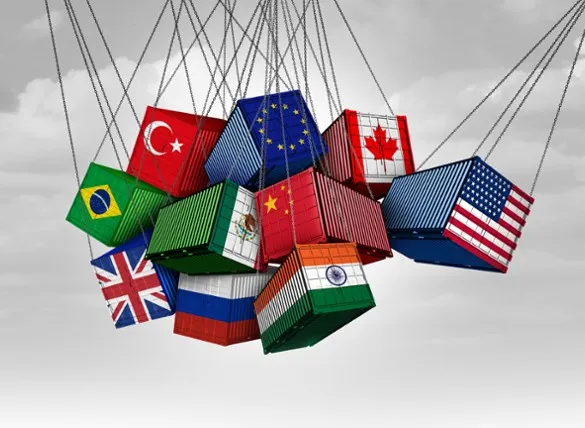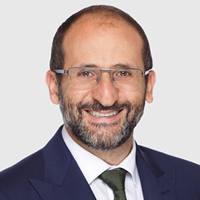Emerging Markets Strategy September Commentary
Key Takeaways
-
Listed infrastructure outpaced global equities in the third quarter as a growth scare, coupled with high valuations for AI-related tech stocks, catalysed a market rotation to a mixture of defensive, commodity-sensitive and rate-sensitive securities.
-
A 50 basis point cut to the U.S. federal-funds rate also helped defensive and yield-oriented sectors such as communication towers, the leading sector in terms of absolute returns.
-
Given the prospect of slowing growth from elevated levels as well as declining interest rates, we believe the defensive and income-producing qualities of infrastructure will become more apparent, as was evident in the third quarter.
-
China’s bazooka stimulus package symbolised a turning point of growth narrative of emerging markets.
Market Overview
Listed infrastructure outpaced global equities in the third quarter as a growth scare, coupled with high valuations for AI-related tech stocks, catalysed a market rotation to a mixture of defensive, commodity-sensitive and rate-sensitive securities. Signs of slowing growth also raised hopes for an interest rate cut in the U.S., and the Federal Reserve delivered with a larger-than-expected 50 basis point cut to the federal-funds rate in September.
The rotation toward a risk-off market sentiment, driven by a combination of weak economic data from Europe, disappointing technology-related earnings results, softer than expected job reports from the U.S. and an interest rate hike by the Bank of Japan, helped showcase the defensive nature of infrastructure, which should continue to receive a tailwind from further interest rate cuts in the quarters ahead.
On a sector basis, the rate cut in the U.S. was positive for a range of infrastructure sectors, with electric, water and gas utilities performing well, along with longer-duration communication towers and renewables. More economically sensitive sectors made solid gains but trailed the group, as airports, rails and toll roads coped with concerns of slowing economic activity and lower oil prices, due to rising inventory levels in the U.S. and lackluster demand from China, weighed on energy infrastructure.
China’s rate cut and stimulus announcement helped the emerging markets performance towards quarter end, although this was offset somewhat by Brazil’s market pullback with the country’s growth surprise prompted rate hikes diverging from the Fed’s cycle.
Portfolio Performance
The ClearBridge Emerging Markets Strategy outperformed relevant infrastructure and global equities benchmarks during the quarter.
On a regional basis, Asia Pacific (+3.63%) was the top contributor for the quarter, with Indian electric utility National Thermal Power Corporation (+0.83%) and Brazilian water company SABESP (+0.74%) the lead performers. National Thermal Power Corporation Limited (NTPC) is India’s largest power generation company, generating close to 19% of India’s power. NTPC has emerged as a diversified power major with presence in the entire value chain of the power generation business. The company’s nuclear entry and filing of renewables listing helped to support NTPC’s share price in the quarter.
SABESP is the largest regulated water utility company in Latin America and caters to a client base of approximately 26.7 million customers. SABESP was a strong performer this quarter after the company concluded their privatisation process with Equatorial emerging as the acquirers. The company subsequently appointed a new board of directors and posted a strong quarterly result post the conclusion of the deal.
Chinese electric utility China Resources Power (-0.19%) and Brazilian rail operator Rumo Logistica (-0.21%) were the largest detractors.
China Resources Power (CRP) is an independent power producer (IPP), operating 33 GW of thermal power units and 17 GW of wind and solar power units in China. Its holding company is China Resources Group, a major state-owned conglomerate. CRP’s share price fell due to profit-taking after a strong share price outperformance in the previous quarter.
Rumo Logistica, a vertically integrated rail company based in Brazil, primarily deals with agricultural volumes (corn, soybean and sugarcane), as well as intermodal (containers) and other bulk products. Exceptionally dry weather in Brazil has once again sparked concerns about the size of the 2024/2025 corn and soybean crops. This has led to a delay in Rumo’s pricing for 2025, which has caused some investor concern.
During the quarter, we initiated a position in Chinese port operator Qingdao Port International. We also exited our positions in Indian energy infrastructure company Mahanagar Gas, airport operators Malaysia Airports and Airports of Thailand.
All returns are in local currency.
Positioning and Outlook
We remain defensively positioned as impacts of tightened financial conditions continue to impact the economy and ultimately corporate earnings, but we have added select GDP-sensitive exposure in China and India given attractive risk-reward proposition and the easing cycle underway. We are expecting bond volatility to reduce and market breadth to continue to broaden — as that occurs, we expect that the market will increasingly recognise the strong fundamentals and long-term themes of infrastructure. Utilities should continue to benefit from themes of electrification, renewables growth and more recently higher electricity demand from data centres, and we remain constructive on the sector. Given the prospect of slowing growth from elevated levels as well as declining interest rates, we believe the defensive and income-producing qualities of infrastructure will become more apparent, as was evident in the third quarter.
Related Perspectives

Infrastructure Poised to Mostly Weather Tariff Storm
A new regime of tariffs will likely create the need for more infrastructure to support reshoring, while utilities' lack of exposure to international trade may bolster their defensiveness.
Read full article


